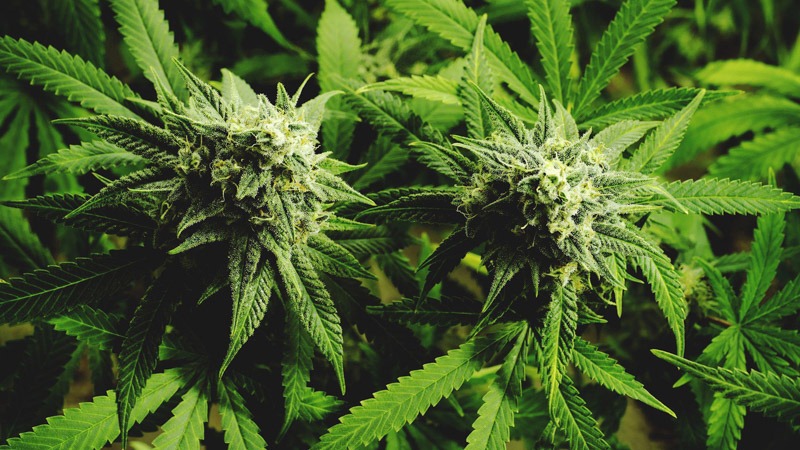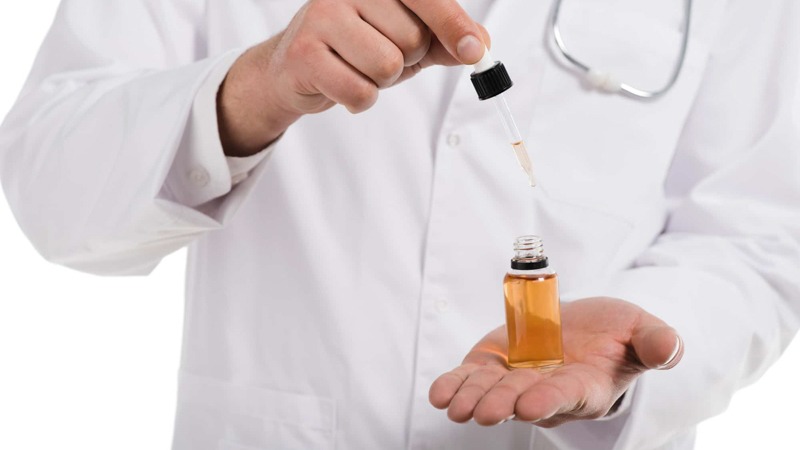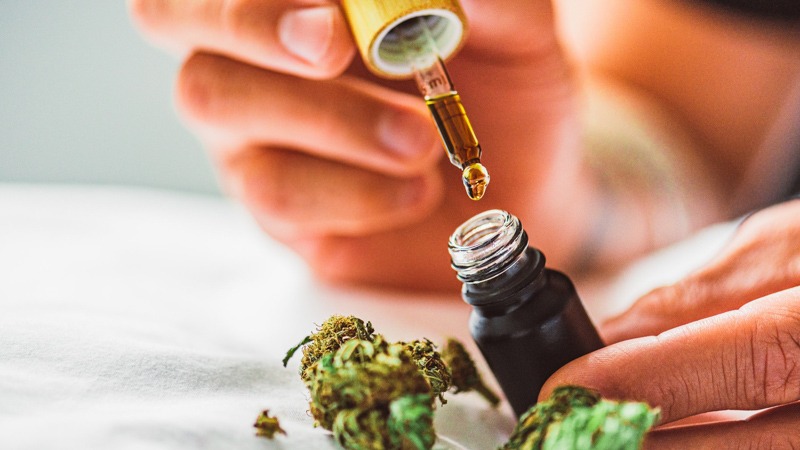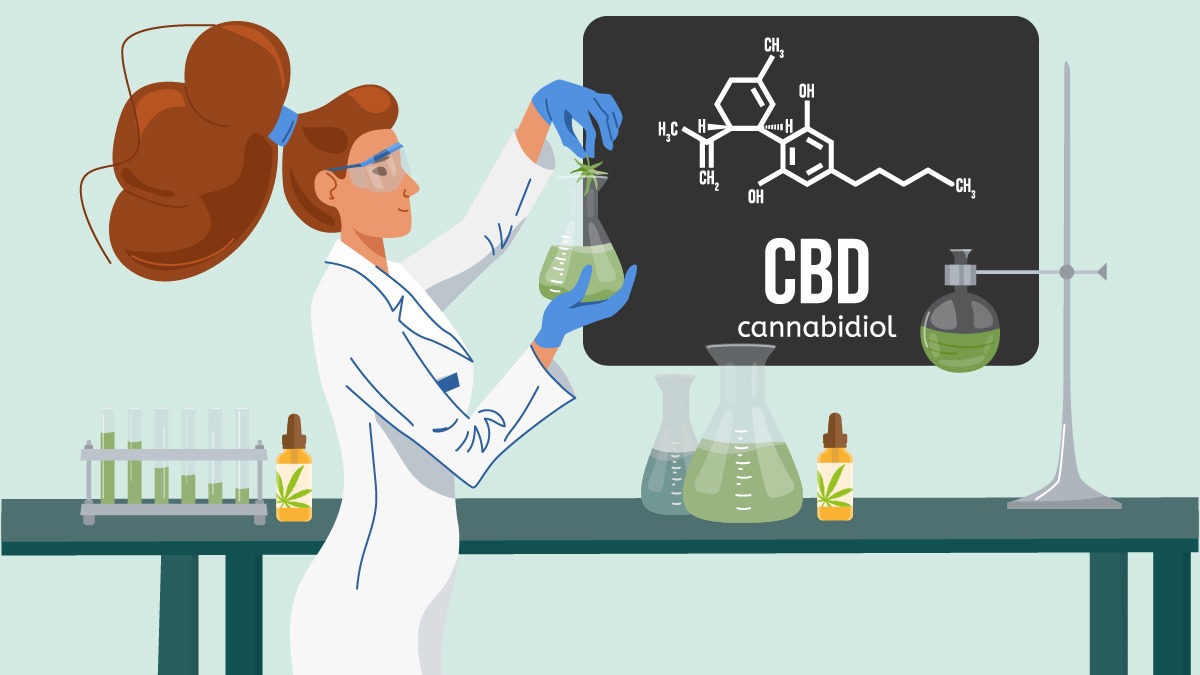Whether you’ve heard about CBD from a friend, read something on the Internet, or are simply seeking a natural alternative to alleviate ongoing symptoms or deterioration in general well-being, CBD oil is probably the first product you’ve learned about.
CBD hemp oil is making big headlines in the mainstream news. People claim it’s changing their lives — but finding reliable information on what CBD is — in an easily digestible form — can be a great challenge.
This article will help you get all the information about CBD; where it comes from, benefits, uses, is it legal, and whether it’s good for you — chapter by chapter.
Continue reading to discover the non-psychoactive side of medical cannabis.
Cannabinoids? Cannabidiol? Breaking Down Major Cannabis Terms
CBD is the acronym for cannabidiol. It belongs to a class of chemicals known as cannabinoids i.e. compounds that naturally occur in cannabis plants.
This is where the first concerns start to arise.
Before we discuss the features of CBD in details, it’s important to stress that while it comes from cannabis, this doesn’t make it psychoactive. In fact, CBD doesn’t create a high, because it’s not capable of exerting such actions on the brain on its own.
The cannabis high is caused by another cannabinoid, THC, which we’ll cover later in the article.
Full-spectrum CBD hemp oil is derived from cannabis plants that contain over 400 different compounds. 113 of them are classified as cannabinoids; CBD is one of them, and the second-most prevalent one — depending on the type of cannabis.
That’s because CBD can be sourced from both hemp and marijuana — despite being the same species, these two plants are completely different when it comes to their cannabinoid profiles.
Now let’s make sure you understand the basic definitions in the cannabis language:
Cannabis
Cannabis is an umbrella term that describes a family of plants — including hemp and marijuana. Until recently, cannabis was mostly associated with the latter, although the emergence of CBD oil in the mainstream media has put hemp plants in the spotlight over the last few years.
Cannabis plants produce over 400 chemicals, 113 of which are unique to the plant and can be separated from the source material for medicinal and recreational purposes.
Cannabinoids
Cannabinoids are the active substances unique to cannabis plants. Some cannabinoids are believed to exist in other plants, such as echinacea, although none of them as abundant as cannabis. They interact with the human endocannabinoid system (ECS), through which they produce their benefits and other effects.
CBD (Cannabidiol)
CBD is the second-most prevalent cannabinoid found in the flowers of the mature cannabis plant. It occurs naturally and can be extracted from the plant matter along with other cannabinoids in oil form. Further filtration can lead to isolating CBD from the rest of the active substances. Cannabidiol is non-psychoactive, meaning it can’t get you high.
THC (Tetrahydrocannabinol)
THC is the most commonly found cannabinoid in the cannabis plant. Popular for its psychoactive effects, it’s the compound that triggers a set of euphoric sensations described as the “high” produced by recreational and medical cannabis (marijuana).
Speaking of THC…
Because THC is psychoactive and both THC and CBD are both derived from cannabis plants, there’s a lot of confusion about their effects. Knowing the differences between THC and CBD is crucial for understanding the nature of cannabis.
THC vs CBD: The Yin and Yang of Cannabis
 As mentioned earlier, THC and CBD are both naturally occurring cannabinoids. Moreover, each of them has unique and similar medicinal/recreational effects commonly sought among consumers.
As mentioned earlier, THC and CBD are both naturally occurring cannabinoids. Moreover, each of them has unique and similar medicinal/recreational effects commonly sought among consumers.
Since THC is psychoactive, it tends to get users high, and these effects are especially intense in novice consumers. Most of the time, the high from THC is euphoric and accompanied by feelings of physical relaxation and symptom relief. People use it to alleviate chronic pain, mood disorders, inflammatory conditions, and other medical ailments.
However, sometimes, the effects of THC can backfire at the user when taken in high quantities or by those particularly sensitive to this compound. The side effects of ingesting too much THC include anxiety and paranoia.
CBD, on the other hand, can’t get you high because it lacks psychoactive properties.
Interestingly, it can alter the psychoactive effects of THC, easing the aforementioned unwanted reactions.
On top of that, CBD interacts with the human endocannabinoid system to provide similar benefits as its counterpart — and a few unique effects on its own.
The relationship between CBD and THC is commonly known as the “Entourage Effect.”
To sum it up, CBD is:
- Naturally occurring
- Safe
- Non-psychoactive
- Beneficial for a wide range of symptoms
The fact that the benefits of CBD come without the negative side effects makes it a legal, more accessible option than medical marijuana — so long as it contains less than 0.3% THC per dry content.
Where Does CBD Come From?
There are a few plants that fall in the cannabis family, meaning that CBD can have different sources. The top two are hemp and marijuana. CBD can be extracted from either variety, producing similar health benefits but with different ratios between THC and CBD.
The source of oil is also a decisive factor for its legality in a given state.
The parts used to make CBD extracts are mostly the flowers and leaves of hemp or marijuana, depending on the source.
That’s because the flowers and leaves carry the highest concentrations of trichomes, crystal-like glands where cannabinoids are secreted.
Below we highlight the key differences between hemp and marijuana.
| Hemp | Marijuana | |
| Is it Cannabis? | Yes | Yes |
| THC Content | Low THC (<0.3%) | High THC (5–35%) |
| Is it Psychoactive | No | Yes |
| Growth requirements | Grows almost anywhere; requires minimal care. | Grown in a carefully controlled environment |
| Uses | Supplements, food, body care, clothing, plastic, construction, automobiles | Medical and recreational use |
What Are the Effects of CBD?
CBD has gained so much recognition among patients and health experts due to the aforementioned lack of psychoactive properties.
While marijuana is a highly beneficial plant, today’s marijuana strains contain around 20% of THC on average. For many users, mood alteration is a natural result and the desired effect.
Others may be concerned about consuming THC for a variety of reasons.
For one, this may violate someone’s belief system.
Second, it may lead to less desirable emotions including anxiety and paranoia when taken in high doses.
Moreover, not everybody likes being high and having an altered sense of time.
In such cases, the side effects of high-THC cultivars may outweigh their benefits.
This isn’t a problem with high-CBD plants. The majority of CBD products are made from hemp plants, which have less than 0.3% THC.
So what does CBD do?
- Relieves anxiety
- Reduces stress
- Improves immune function
- Regulates the sleep-wake cycle
- Alters pain signaling to the brain
- Enhances mood
- Improves focus
- Protects cells against oxidative damage
- Provides an overall sense of balance
This makes CBD a highly versatile compound, capable of alleviating a wide range of health conditions.
The Science Behind the Effects of CBD Oil
CBD helps regulate the human endocannabinoid system (ECS) by acting on cannabinoid receptors — something you probably never learned about during biology classes at school.
This system regulates neurochemical balance in the body, affecting a variety of functions like mood, sleep, blood pressure, immune response, neuroprotection, pain transmission, reactions to fear, and more.
When the endocannabinoid system is balanced, so are the body and brain.
In other words, CBD helps regulate important physiological and mental functions, resulting in optimal health and documented benefits.
What Is CBD Used For?
 Now that you can tell the difference between hemp and marijuana, and you know what THC and CBD do, it’s time to elaborate on the actual benefits of cannabidiol. The number of health benefits as well as relief from many lingering symptoms.
Now that you can tell the difference between hemp and marijuana, and you know what THC and CBD do, it’s time to elaborate on the actual benefits of cannabidiol. The number of health benefits as well as relief from many lingering symptoms.
Below we discuss the most popular applications for CBD products.
1. Anxiety
By modulating the cannabinoid receptors, CBD can reduce anxiety, even in long-time sufferers. The benefits of CBD for this condition stem from its interaction with serotonin and GABA receptors, both of which are involved in controlling the activity of our brain, our mood, and how we react to stress.
2. Acne
Like the majority of skin conditions, acne starts with inflammation in the skin and the overproduction of certain chemicals in the body. CBD can balance sebum production in the skin, helping to prevent breakouts and oily skin.
3. Type 1 Diabetes
Type 1 Diabetes is an autoaggressive condition when a person’s immune system attacks the pancreas, triggering inflammation, and compromising insulin response. Studies show that CBD reduces pancreatic inflammation, allowing for better management of this condition.
4. Drug Withdrawal Symptoms
Recently, CBD has been recognized for its ability to curb withdrawal symptoms caused by smoking or opioid cessation. These are serious obstacles to moving forward, so CBD may prove an effective tool on the road to effective recovery.
5. Neurological Disorders
Neurodegenerative conditions such as Parkinson’s and Alzheimer’s are often followed by a cascade of negative side effects on an individual’s cognitive capabilities. This includes a reduced sense of recognition, impaired perception of time, tremors, aggression, and poor cognitive functioning overall. Recent studies have shown that CBD products may be able to strengthen the nervous system and reduce the impact of these effects.
6. Nausea
Cannabinoids like CBD and THC have been recognized for some time for their ability to reduce nausea and increase appetite in post-chemotherapy cancer patients according to common disease treatment protocols.
7. Pain
11.2% of Americans have to struggle with chronic pain on a daily basis, of which 17% suffer from severe pain levels. Because pain can often stem from inflammation, CBD’s anti-inflammatory properties may be a natural way of relieving pain without the side effects of commonly prescribed painkillers.
8. Seizures
CBD has a well-proven track of success in treating intractable forms of epilepsy. It all started with CNN’s broadcast about Charlotte Figi, a girl who found relief in CBD oil for Dravet Syndrome, a rare type of childhood epilepsy. In 2018, the FDA approved a new CBD-based drug Epidiolex.
9. Tumors
Recently, scientists have pointed to CBD oil as a potential solution for tumor shrinkage. CBD was also found to stop the escalation of malignant cells, preventing tumors from spreading throughout the body.
How to Use CBD Oil?
 When it comes to cannabis consumption, most people associate it with smoking. However, consuming CBD oil from hemp has different rules.
When it comes to cannabis consumption, most people associate it with smoking. However, consuming CBD oil from hemp has different rules.
Today, there’s a myriad of options for enjoying the benefits of CBD without the stereotypical use cases you may have in your mind. Depending on the desired effects, their onset, and the absorption rate, there are various forms of CBD oil that may appeal to your preferences.
Comparing Different Consumption Methods of CBD Oil
| Route of Administration | How it Works | Bioavailability | Onset Time | |
| CBD Oil Drops | Sublingual (under the tongue) | 1. Measure out your preferred dose 2. Place a few drops under your tongue. 3. Hold for 60 seconds, then swallow. | ~ 35% | 10–20 minutes |
| CBD Edibles & Capsules | Oral (the CBD content passes through the digestive system) | 1. Eat your CBD food / take a capsule and swallow it with water. 2. Wait for the CBD to absorb. | ~ 20% | 30–120 minutes |
| Vaporization | Inhalation | 1. Load your vaporizer with your CBD vape oil / dry flowers 2. Heat your CBD in the vaporizer’s chamber 3. Inhale | ~ 60% | 2–2.5 minutes |
| Topicals | Localized application | 1. Take a liberal amount of the topical. 2. Rub it onto the affected area. | 0% (CBD reaches the skin, not the bloodstream) | Almost immediately |
Important note: The bioavailability of CBD is expressed in % and refers to the amount of CBD that reaches the bloodstream. Currently, the most bioavailable consumption method is vaporization, peaking at 56%. Topicals, on the other hand, have 0% bioavailability. However, this doesn’t make them less effective — it just means that none of the CBD enters the bloodstream; instead, it engages with the cannabinoid receptors in the skin.
Is CBD Oil Legal?
The 2018 Farm Bill made hemp’s legal status in the US very clear — legalizing hemp-derived products on the federal level.
Put simply, CBD oil from hemp is legal in all 50 states.
As with many federal regulations, states have their right to adapt them to their in-state legislature, and some of them have tweaked their laws in order to make CBD oil less available for their residents.
For example, Texas bans any CBD that has even trace amounts of THC, meaning you can only buy CBD isolate there. Other states, such as Nebraska, employed policies that require individuals to apply for a doctor’s recommendation or a medical cannabis card in order to get access to CBD products.
Understanding state laws — especially when they’re contradictory to federal law — is paramount if you want to be straight with local regulations.
Where to Find CBD Oil Near Me
Now you’re probably wondering where you can buy CBD oil and experience its benefits first-hand.
You can do it both locally and online.
Can’t wait to get your very first bottle?
Let us slow down your enthusiasm.
Before you start browsing through different brands, keep in mind that quality is everything. Ensuring your oil is sourced from organic hemp plants and a reputable vendor while meeting the regulations of your state law should be your main priority.
A hasty decision can ruin your experience with CBD oil, especially if you buy an untested product that carries god-knows-what aside from the declared amounts of CBD — if there’s any CBD at all in that product, of course.
The best way to find a trusted company that sells high-quality CBD oil is to check your online options. While buying CBD locally in your dispensary is a convenient option, in-store vendors often have limited selections of different CBD formats.
The majority of CBD stuff is sold online today. Not only can you find better deals there, but you also have access to virtually any form of CBD, from oils to capsules, vapes, gummies, and even beard balms.
Just make sure to research your potential provider, check if there are third-party testing reports available for the product you want to buy, and take some time to read reviews from other customers.

